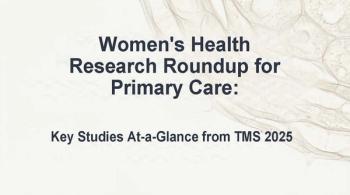
Retinal Vessel Size May Reflect Coronary Heart Disease Risk
SIDNEY, Australia -- As windows on the heart, the eyes may see a risk of coronary heart disease death, according to an Australian study.
SIDNEY, Australia, July 13 -- As windows on the heart, the eyes may see a risk of coronary heart disease death, according to an Australian study.
Microvascular disease, reflected in the size of retinal vessels, may have a role in the development of coronary heart disease, particularly in women, Jie Jing Wang, Ph.D., at the University of Sydney here, and colleagues, reported online in Heart.
In a population-based cohort study of 3,654 Australian men and women over age 49, the researchers measured retinal arteriolar and venular calibers using baseline retinal photographs and then calculated the arteriole to venule ratio.
Over nine years, incident coronary heart disease-related deaths occurred in 78 women (4.1%) and 114 men (7.8%). Larger retinal venules independently predicted a 1.5- to two-fold higher risk of death from coronary heart disease in both men and women, ages 49 to 75, the investigators said.
Narrower arterioles and a smaller arteriole to venule ratio predicted a similar 50% or greater risk of death, but only in women, the researchers said. However, none of these findings was observed in people older than 75.
Patients were recruited for the Blue Mountain Eye Study, a population-based cohort of predominantly Caucasian people ages 49 or older at the start of the study in 1992. Coronary heart disease deaths were confirmed from the Australian National Death Index.
At the baseline examination (1992-1994), stereoscopic retinal photographs of the macula and other retinal fields in both eyes were taken after pupil dilatation. An arteriole to venule ratio of 1.0 calculated from these fields suggests that arteriole and venule calibers are on average the same, with changes in vessel size affecting the ratio, the researchers explained.
According to the findings, wider venules were associated with coronary heart disease death, with a relative risk 1.8 (95% confidence interval 1.1 to 2.7), and RR 2.0 (CI, 1.1 to 3.6) per standard deviation (SD) increase in venular caliber for men and women, respectively, after adjustment for traditional risk factors.
Additionally, in women, a smaller arteriole to venule ratio and narrower arterioles were associated with coronary heart disease death: RR 1.5, (CI, 1.1 to 2.2) for decrease in arteriole to venule ratio, and RR 1.9, (CI, 1.0 to 3.5) per SD decrease in arteriole size, after adjustment for standard risk factors. In this study, the researchers said, the relationship between small arteriole to venule ratio and coronary heart disease death reflected both narrower arterioles and wider venules.
"To the best of our knowledge, the current study is the first not only to examine the arteriole to venule ratio but also specifically to examine arteriolar and venular calibers and coronary heart disease death," the researchers wrote.
A limitation of the study, they said, was that they did not image the coronary vasculature directly, but rather assumed that certain retinal changes would mirror changes in the coronary microcirculation as part of a systemic microvascular disorder.
In addition, it is possible, they said, that other "unmeasured factors (for example, use of vasodilator drugs and other subclinical vascular co-morbidities) could have affected or confounded the study findings."
Finally, they said, the number of deaths was small and these findings need confirmation in other populations. Still, they said, signs in the small vessels of the eyes appear to be independent predictors of the risk of death from coronary heart disease.
Summing up, Dr. Wang wrote that the study suggests that microvascular disease processes may have a role in the development of coronary heart disease in middle-aged people, particularly in women. Additionally, retinal photography may be a useful non-invasive way of assessing this risk, he said.
Newsletter
Enhance your clinical practice with the Patient Care newsletter, offering the latest evidence-based guidelines, diagnostic insights, and treatment strategies for primary care physicians.


















































































































































































































































































